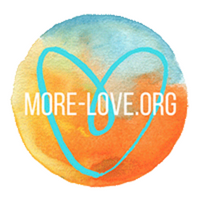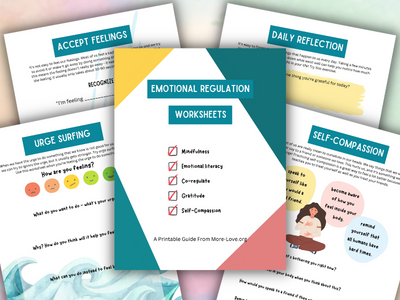
by Jennifer Kreatsoulas, PhD, CYT
Every Spring, I get an itch to run again. I daydream about the joyful feeling of running on a clear, sunny, 60-degree day–just me and the pavement and that keen sense of boundless freedom. Or sometimes I drive past my gym and remember the empowering satisfaction that bubbles up inside after a solid workout.
The truth, though, is that it only takes a few short minutes of running or stepping or rowing before those positive feelings of freedom and satisfaction are abruptly hijacked by the desire to push and force until I drop dead–figuratively and literally.
From years and years of overexercising or even using “appropriate” exercise to burn up calories, beat up my body, and undo (perceived) weight gain, intense cardio automatically turns on my merciless eating disorder mindset. Despite the best of intentions to workout for the right reasons and in a healthy, mindful way, I still find it hard to resist the pull of my eating disorder. I’ve learned to respect my limits and find activities, like yoga, that empowers versus inhibits me.
Emotional Regulation Worksheets
Give these printable worksheets to grow more confident, calm and resilient and feel better, fast!
- Self-Esteem
- Self-Regulation
- Mindfulness
- Calming strategies
For many of us in eating disorder recovery, exercise is a hot-button topic. Whether you are like me and have a history of overdoing it, or if you are at the other end of the extreme and just plain hate exercising, or are somewhere in between, it’s challenging to untangle the benefits of exercise from the beliefs of the eating disorder. Yet, it’s crucial that we do not let our own complicated relationship with exercise influence our children.
This means finding creative ways to model healthy and appropriate attitudes toward exercise, our kids’ bodies, and your own body as well. Yes, this is hard work—even triggering at times—but the benefits to our children and the potential healing for ourselves will pay off tenfold.
How do I know? Well, I have two small girls of my own who are balls of energy and at complete and total ease in their bodies. They dance, jump, run, roll, and climb like no one is watching. Luckily, they are still young enough to not be concerned about whose watching. Nor do they have a clue about calories, weight gain, fat, thigh gaps, muffin tops, and on and on. They simply move. Carefree and curious. It’s a beautiful sight.
To help guide positive conversations with our girls about movement and model healthy attitudes around exercise, my husband and I follow these three rules:
1. Don’t comment on body parts or shape
Most children begin with a carefree feeling about their bodies; they move without worry. They don’t see separate body parts or feel limited by the shape of their bodies. Instead, they live to the fullest in the moment. We serve our children best by praising them for all things they do and try, no matter how big or small. For instance, praising them for being brave and trying something new versus having the longest and fastest legs reinforces that our values and virtues are our truest source of strength. If we build up their inner resilience in this way, they are more likely to withstand the pressures they will face about their bodies as they grow up.
2. Don’t define what counts as exercise
Whether my girls dance for 3 minutes or ride their bikes for 20, both are equally valuable forms of movement. It would be so easy for me, the once overexerciser, to label the longer activity as “real” exercise and the impromptu dancing as “not real.” Once I bring that kind of language into my conversations with my daughters, however, I risk robbing their fun of innocent playfulness and setting off self-consciousness, comparison, competition, and a need to please others through their bodies and the activities they choose to do or not do. When I watch my children play, I look for joy in their eyes. My job is to preserve that sense of joy for movement for as long as I possibly can. By not defining or ranking exercise, I allow the girls to discover what they enjoy on their own.
Emotional Regulation Worksheets
Give these printable worksheets to grow more confident, calm and resilient and feel better, fast!
- Self-Esteem
- Self-Regulation
- Mindfulness
- Calming strategies
3. Don’t make it about you
This may be the hardest rule to follow. Like rule #2, it’s very important to not insert your preferences for, beliefs about, or relationship with exercise. Refrain from commenting in front of your children about needing to burn off lunch, the cookie you ate yesterday, or calories in general. Don’t comment on your own body parts or refer to exercise as punishment or penance. Let go of language like “I’m being good” or “I am bad” in relationship to exercise. These messages run the risk of warping the carefree joy of movement for our children. I think about all the years I lived by and with these torturous beliefs and thoughts. No matter how hard of a day I am having, I cannot speak this way in front of my children. On those days, it’s best to turn to my husband and other supports in my life.
For us parents who are in recovery as well as parents of children with eating disorders, we have an opportunity and obligation to teach our children about the importance of movement. No matter what our personal relationship with exercise may be, it’s imperative that we step up to the plate and expose our children to physical activity such as play, exercise, sports, or simple fun. In addition to the natural cardiovascular and energetic benefits of exercise, research has also shown that physical activity improves learning in children. Get our kids moving, and their bodies and brains will benefit.
Let’s face it, we live in a new social order defined by devices, social media, and virtual everything. Ultimately, this is a sedentary way of life, and although there are many, many advantages to living with technology, the downsides can set off a ripple effect of poor health. If we get our children moving now, they will be more likely to continue to embrace activity in healthy forms and amouts as they grow.

Jennifer Kreatsoulas, PhD, CYT, is the founder of Chime Yoga Therapy and specializes in eating disorders and body image. In addition to her private yoga therapy practice, Jennifer leads yoga therapy groups at the Monte Nido Eating Disorder Center of Philadelphia, is cofounder of the Body Kindness Project, and a partner with both the Yoga and Body Image Coalition and the Transformation Yoga Project. She is the creator of the home video series Yoga to Strengthen Body Image and Support Eating Disorder Recovery. Her writing on the topics of yoga, body image, motherhood, and eating disorder recovery can be found on her blog as well as a variety of publications, including YogaLiving Magazine, Recovery Warriors, Women For One, The Mighty, The National Eating Disorder Association blog, and several other influential online publications. Jennifer has been featured in the Huffington Post, Women You Should Know, Medill Reports Chicago, Philly.com, and the DailyDot. Connect with Jennifer: www.ChimeYogaTherapy.com.

